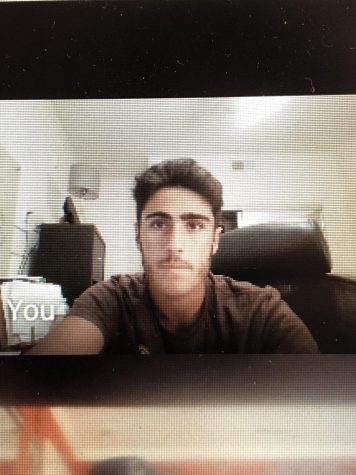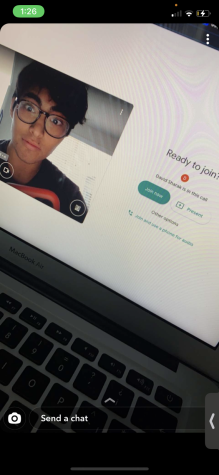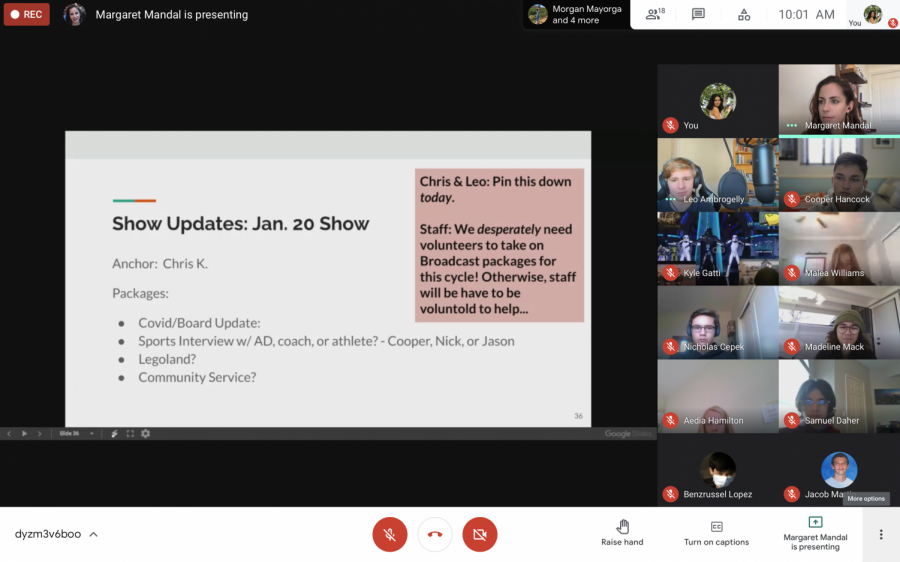Sage Creek Requires Cameras On During Online Learning; Student’s Reactions are Mixed
A Zoom call for the journalism class is currently in session. It is apparent that students have a 50/50 liking to the camera policy. Some still opt to have their camera’s off for privacy or personal reasons, and some enjoy having them on to engage with other students.
Jan 11, 2021
Upon the return to the second trimester of the school year, students were met with a new requirement: having cameras on during all of their classes throughout the school day.
Previously, this was never a requirement for students because distance learning was something new for everyone, and trying to navigate it, was a beast in itself. But it soon became apparent that without forcing students to have their camera on, it was hard to tell when students were engaged, understanding concepts, and present during the entire class.
Some students, such as junior Faith Klein have found this new policy extremely difficult to deal with. Klein has had several internet connection issues which causes her Google Meet to be glitchy and makes it difficult to even understand the content that is being taught.
“It will literally take me the whole class period to get my Nearpod going,” Klein expressed.
This seems to be a rising trend and Klein said that many of her friends have experienced the same issues. Students have said that taking tests with cameras on is sometimes impossible. They will either not be able to load questions or continuously be booted off the meet.
Math teacher Domenic Manente noticed this and therefore implemented a quite lenient policy when it comes to having students turn their cameras on.
“I want students to have their camera on, but if they can’t I understand,” Manente said.
Manente knows that everyone has their own technical situations and everyone has a limit to what they can and can not do. But, Manente also stated that with the new policy, a handful more students have kept their cameras on during class which has allowed him to engage more and be able to determine if the curriculum is something that his class is understanding based on facial expressions.

Other students, including senior Connor Jabbari, have enjoyed having so many students with their cameras turned on. Jabbari has been a proponent of keeping his camera on throughout the entire distance learning curriculum and enjoys being able to actually interact with his classmates instead of talking to a blank screen.
“I think it’s good that more people have their camera on. They should not be forced to have them on, but they should be encouraged to have them on,” Jabbari stated.
Like Jabbari, many other seniors have said the same thing. Although it is enjoyable to see their classmates on the screen, students should not be required to have them on, which some teachers do require. Bruno Mendez appreciates keeping his camera on and having his classmates do the same, but commonly turns it off for a few different reasons.
“It’s hard to be on the computer all day without being interrupted,” Mendez explained.
Mendez went on to say that he commonly is interrupted by his family members asking him to do various chores, or asking him for help. He expressed that it’s very difficult to separate school and home in distance learning, and in reality they kind of mush together. He doesn’t keep his camera on during these times because he does not want to show any level of disrespect toward his teachers. But Mendez also expressed that sometimes it is just uncomfortable to have his camera on.

“When I’m eating, it’s uncomfortable. When people stare at you eating, it’s uncomfortable,” Mendez said.
Some individuals also struggle with putting themselves on camera for a variety of reasons. Students have expressed that they are uncomfortable showing their room, or they know students who do not live in an environment that they want to be showcased to all their classmates, and some students struggle with body image. Senior David Sharak shed light on his personal opinions regarding the camera policy and his level of comfort with presenting himself on the screen every single day.
“…I almost always kept my camera on prior to it being mandatory, and I also sincerely believe that class engagement has increased due to it, even if it only amounts to previously camera-shy students giving visual cues like smiles, frowns, thumbs-up, etc.,” Sharak stated.
But he also expressed that being on his camera has forced him to feel the need to keep his room and himself presentable on a daily basis.
“I generally try to keep myself presentable even during online school, and maintain my room (where I tune in to online classes) presentable as well, so I don’t mind having my teacher and classmates seeing it,” Sharak stated.
Sharak also expressed that he knew that there were some students that do not have presentable households and that their learning should not be compromised by their constant fear of their home being broadcasted to their classmates.
“In cases such as that, temporary exceptions ought to be made,” Sharak explained.
The camera policy seems to have evoked a 50/50 response from the student body. Some students are ecstatic at the chance to finally interact with the rest of their classmates they have not seen in almost a year. Others, seem frustrated and anxious regarding fears over stable internet connections, privacy issues, and level of comfort. But teachers have thankfully navigated this situation and seem to be supporting students with their personal decisions regarding the policy.
“All of my classes pretty much give us the option,” Klein said.
This decision seems to be appreciated among the student body, as they can make their own decisions whether they feel that having their camera on enhances their education, or having their camera on inhibits their education. Whatever they choose, their Sage Creek teachers seem to be supporting them.






